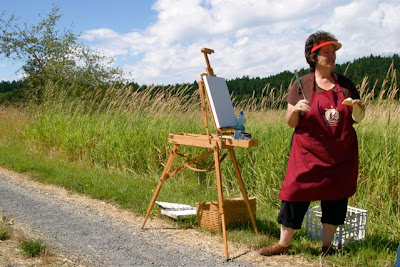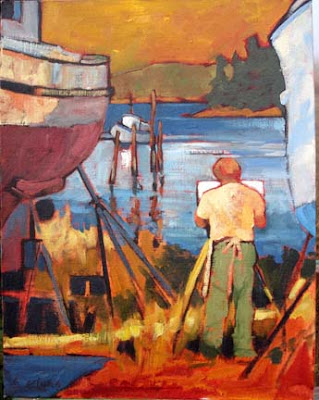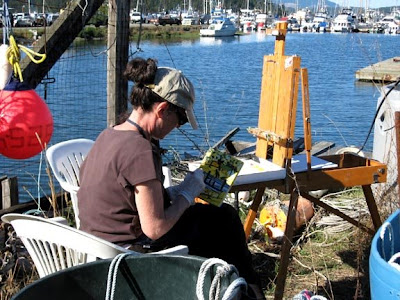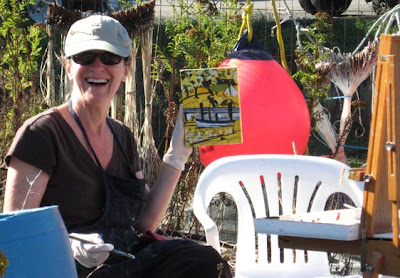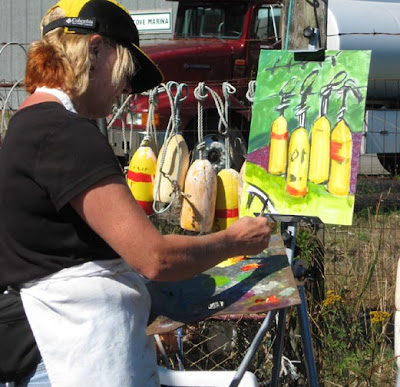
Photo of the view out across to Mt. Dallas. Deciding to concentrate on far view, eliminate pond, would need much bigger canvas to include it.

Laying in the sketch, drawing shapes with my brush and thin paint, working on plain white canvas.

Starting in the back, establishing values for the farground.

Darken area by fir trees, imbedding fence and forward single tree into paint surface.

Adding yellows and reds to foreground. Establishing hint of 2 vanishing point in foreground to help flatten foreground over natural terrain.

Reestablish sky-holes in dark fir trees, continue warming up foreground, get shadows shapes into forward single tree.

Make sure darks are interesting, adding dried grass to fenceline, lively brushwork in foreground.

Cutting back sky hole shapes in fir trees, really warming up under painting for foreground. Stand back and see what painting needs......Check edges, soft and hard edges....

Adding lighter values forward to help add some contrast. Lighter values on grass and single tree. Worked up into sky. Don't want to get to fussy with grass brush strokes. Finished for now, sign into the wet paint.
I start off at a new location sketching, looking for a view I like. Sketching helps me to simplify what's out there. I can make some compositional decisions, cropping and positioning things. For this 16" x 20" canvas, I took pictures along the way to show one way to develope a painting. I typically start in the back and paint forward in a landscape painting. This was painted over a 4 hour period, luckily the light stayed consistant. My palette had very few colors, french ultramarine blue, cadmium yellow medium, cad red, a little terra rosa, and white. Basically one of each primary and everything was mixed.



